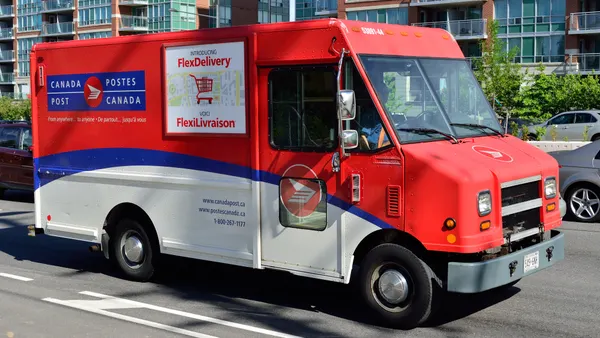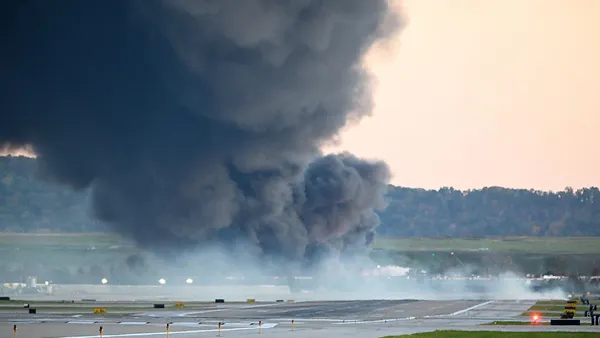Dive Brief:
- The U.S. government has released new regulations requiring big trucks to lower carbon emissions by up to 25% and cut fuel use in the next decade, The Wall Street Journal reported.
- Many trucking industry execs support the changes, as they help cut fuels costs over large fleets. The regulations are among many that the Obama administration has issued to address greenhouse gas emissions.
- The new standards for greenhouse gas emissions and fuel efficiency standards for medium and heavy duty vehicles will affect model years 2018 and beyond.
Dive Insight:
The American Trucking Associations declared themselves "cautiously optimistic" on the new environmental rules, given the 10-year phase-in period would provide logistics operators and manufacturers an opportunity to adjust to the potential costs. The final rule includes several of the association's demands, such as the phase-in period and flexibility for manufacturers.
However, the association remains cautious due to the volatile nature of energy prices, and the potential cost of the new rule. The Wall Street Journal reports the cost for a tractor-and-trailer combination to meet the rule in ten years may still exceed $15,000. Such costs, while potentially manageable for many large logistics operators, could drive smaller companies into a bind.
Regardless, the measured acceptance of the rule by the trucking industry, which has traditionally opposed any such reform, was widely celebrated by the administration, which claims the standards will both benefit the climate and modernize America's trucking fleet.
"Today's final standards will promote a new generation of cleaner and more fuel efficient trucks. That means 1.1 billion fewer tons of CO2 will be emitted into the atmosphere, and operators will save 2 billion barrels of oil and $170 billion in fuel costs. The additional cost of a new truck will be recouped within 2-4 years, saving truck owners more over the long haul," a statement from the agencies said.
The trucking sector hauls about 70% of all U.S. freight and is the nation's second largest transportation segment in terms of emissions and energy use, the Department of Transportation and Environmental Protection Agency said.













